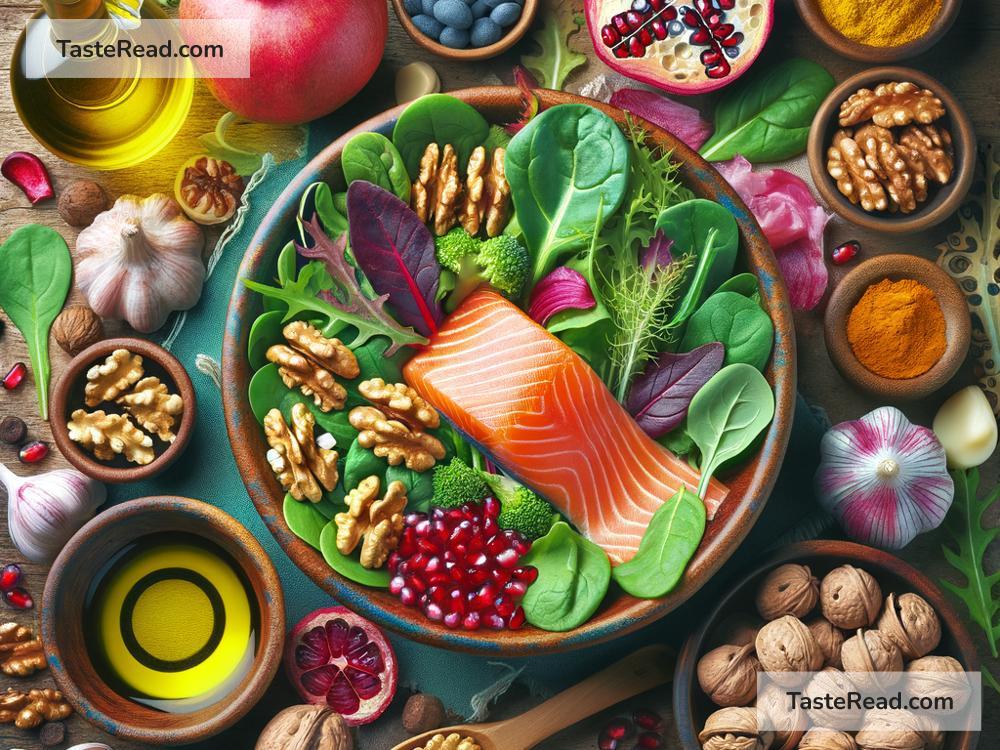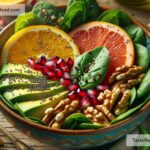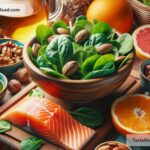Foods That Reduce the Risk of Thrombosis: What to Eat for Better Circulation
Thrombosis is a condition where blood clots form inside blood vessels and can block the flow of blood. It can be dangerous, leading to complications like strokes, heart attacks, or even death. The good news is that food plays a big role in keeping your blood vessels healthy and reducing the risk of thrombosis. Certain foods can help improve circulation, lower inflammation, and prevent clot formation. In this article, we’ll explore what these foods are and how they work in simple terms.
What Causes Thrombosis?
Thrombosis is caused by the formation of blood clots, which can happen for various reasons including:
– Slow blood flow or immobility (like sitting for long periods).
– High cholesterol levels that lead to plaque buildup in arteries.
– Inflammation in the body.
– Smoking, obesity, or certain underlying health conditions.
Doctors often recommend keeping your blood thin and circulating well to prevent thrombosis, and diet is one of the easiest ways to do that.
Top Foods That Help Prevent Blood Clots
If you want good circulation and healthy blood vessels, incorporating these foods into your diet is a great place to start:
1. Fatty Fish for Omega-3s
Fatty fish like salmon, mackerel, sardines, and tuna are rich in omega-3 fatty acids. Omega-3s reduce inflammation, which is a key factor in clot formation. They also thin the blood, making it less likely for clots to form.
Tip: Aim to eat fatty fish at least twice a week. If you’re not a fan of fish, consider taking a high-quality fish oil supplement.
2. Leafy Greens for Vitamin K and Nitrates
Spinach, kale, and other leafy greens contain vitamin K, which helps regulate blood clotting. They are also rich in nitrates that improve blood vessel function and enhance blood flow.
Fun Fact: Leafy greens won’t make your blood too clotty—they actually promote balance in your body.
3. Garlic for Allicin
Garlic contains allicin, a natural compound that improves circulation by relaxing blood vessels. It also reduces blood pressure and the “stickiness” of platelets in your blood, which can help prevent clot formation.
Pro Tip: Crush or chop garlic and let it sit for a few minutes before cooking. This activates allicin to work its magic.
4. Berries for Antioxidants
Blueberries, strawberries, raspberries, and blackberries are packed with antioxidants like flavonoids and polyphenols. These antioxidants reduce inflammation and protect your blood vessels from damage. Lesser inflammation means lesser risk of clots.
How to Eat: Add a handful of berries to your breakfast smoothie or yogurt for a delicious and healthy treat.
5. Ginger for Anti-Inflammatory Power
Ginger is a natural anti-inflammatory food that helps improve circulation and prevents platelet aggregation (where platelets clump together to form a clot).
Easy Recipe: Make ginger tea by boiling fresh ginger slices in water. Drink this calming tea regularly for its heart-friendly benefits.
6. Nuts and Seeds for Magnesium and Healthy Fats
Walnuts, almonds, chia seeds, and flaxseeds are rich in healthy fats, magnesium, and omega-3s. These nutrients lower harmful cholesterol levels and improve blood vessel health.
Snack Idea: Replace processed snacks with a handful of mixed nuts and seeds.
7. Dark Chocolate for Flavonoids
Good news for chocolate lovers! Dark chocolate (70% cocoa or higher) has flavonoids that improve blood flow and reduce inflammation. It may also lower blood pressure, which reduces clot risks.
Moderation Matters: A small piece a few times a week is enough to enjoy its benefits.
8. Turmeric for Curcumin
Turmeric contains curcumin, a powerful anti-inflammatory compound that helps reduce blood clot risks. Curcumin has been shown to improve circulation and prevent arterial blockages.
Try It: Sprinkle turmeric powder onto your soups, stews, and stir-fries. Pair it with black pepper to boost absorption.
9. Tomatoes for Lycopene
Tomatoes contain lycopene, an antioxidant that keeps your blood flowing smoothly and reduces inflammation. They also help prevent arterial damage and lower cholesterol.
Tip: Cooked tomatoes (like in sauces or soups) are even better, as heat makes lycopene easier for your body to absorb.
10. Whole Grains for Fiber
Foods like oats, brown rice, quinoa, and whole wheat are high in fiber. Fiber reduces cholesterol and helps maintain healthy blood pressure, both of which lower the risk of clots.
Swap Suggestion: Instead of white bread, choose whole-grain bread or oatmeal for more nutrients and better heart health.
What to Avoid
While eating healthy foods can reduce clot risks, some foods can increase inflammation and promote clotting. Limit:
– Processed foods like chips and sweets.
– Sugary drinks like soda.
– Trans fats found in fried and fast foods.
– Excess salt.
A Balanced Diet is Key
Remember, no single food will prevent thrombosis on its own. It’s all about eating a balanced diet full of healthy, nutrient-rich foods. Combined with regular exercise, staying hydrated, and avoiding smoking, these lifestyle changes can dramatically lower your risk.
Bottom Line
By choosing heart-healthy foods like fatty fish, berries, garlic, and leafy greens, you’re showing your body love and reducing your risk of thrombosis. Small changes in your daily diet can add up to a big impact on your health long-term. Eat smart, stay active, and keep that blood flowing smoothly!
Have you incorporated these foods into your diet? Let us know in the comments below! 💬


